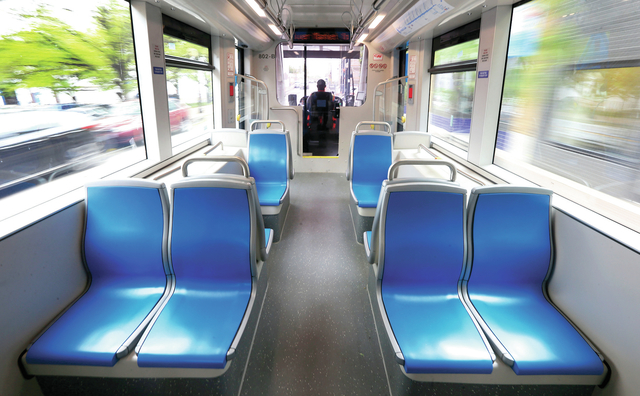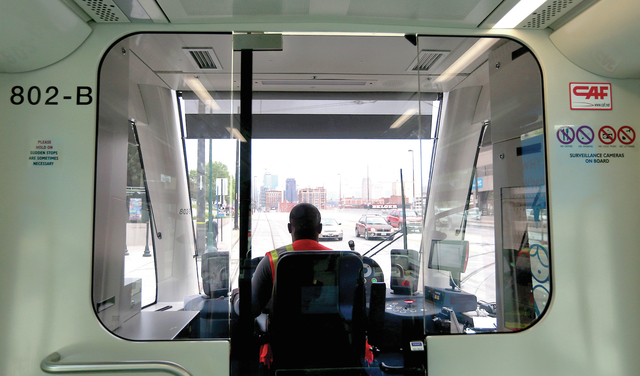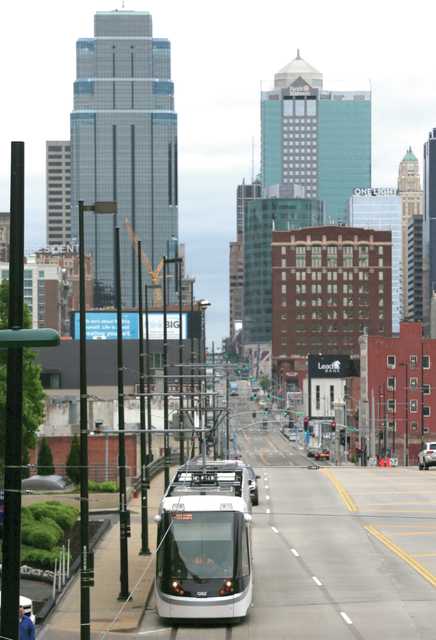KANSAS CITY, Mo. — Six decades after Kansas City shuttered one of the nation’s largest streetcar networks, a modern but much smaller version is set to open in its central business district — a project supporters say already has spurred hundreds of millions of dollars’ worth of downtown development.
A 2.2-mile starter line from Union Station near Crown Center to the River Market, a few blocks from the Missouri River, opened to the public Friday. A two-day celebration along the route this weekend included speeches, music, fireworks and carnival rides.
It’s expected to be the base of a network that could eventually extend to the city’s south and east sides, encompassing the Country Club Plaza — an upscale shopping district — and the University of Missouri-Kansas City campus. That is, if city leaders can figure out how to pay for the expansions.
“Kansas City has tried with fits and starts over many decades to build a rail transit spine through the heart of the city, but failed many times,” said David Johnson, a member of the Kansas City Streetcar Authority Board. “This line represents the first baby steps in bringing that back.”
President Barack Obama’s American Recovery and Reinvestment Act provided the springboard for what has become a national streetcar renaissance.
Since 2009, the U.S. Department of Transportation has awarded $547.7 million to 15 streetcar projects across the country, including starter lines in Kansas City, Dallas, Atlanta and Tucson, Ariz., and extensions to existing streetcar systems in Portland and New Orleans, the DOT said.
The Kansas City line cost $102 million, including $37.3 million in federal funding along with proceeds from a 1-cent sales tax and increased property taxes within the development district.
According to the Kansas City Streetcar Authority, $1.6 billion in new investments have been announced along the corridor since 2012. Of that, the city estimates $381 million in projects within a few blocks of the streetcar line have been directly attributed to the project.
Streetcars have come full circle in Kansas City since the days when there were more than 700 registered to travel roughly 300 miles of privately-built tracks, said Monroe Dodd, a retired Kansas City Star editor who published a book in 2002 about the city’s streetcar history.
The earlier streetcars peaked in the early 1920s, before cars became widely affordable, Dodd said. In their heyday, streetcar lines were built by private investors as a way to carry people to the city’s fringes, where they could buy property and build things.
“The streetcar system was the first big conveyer of Kansas Citians to the outer limits of the city, creating the sprawl Kansas City is famous for,” Dodd said.
However, rather than draw people away from downtown, the new starter line seeks to lure them to it. City officials are hyping the project as a sleek amenity that will attract a younger, tech-savvy crowd.
But residents haven’t always fully embraced restarting the streetcar network. Two years ago, voters handily rejected creation of a second transportation development district that would have paid for three extensions.
Among the critics is Crosby Kemper III, director of the Kansas City Public Library. He is skeptical of claims by city leaders that no general fund money will be needed to operate the streetcar once the “new” wears off. He noted that while it’s free for people to ride Kansas City’s streetcars now, other cities such as Portland and Atlanta that initially offered free rides eventually had to charge.
“Part of the problem is we’ve got all this stuff that people say that’s just not true,” Kemper said. “Truth is a really important thing when you start spending the kind of taxpayer money we’re spending.”













